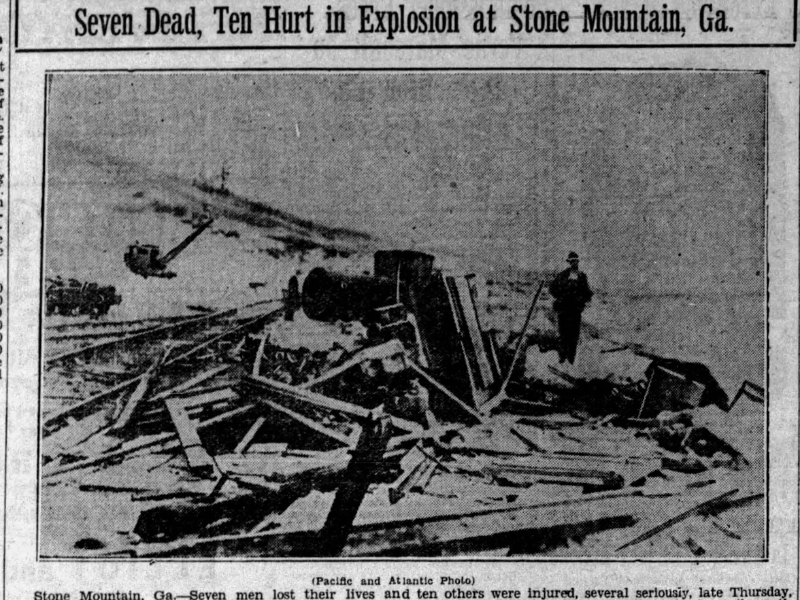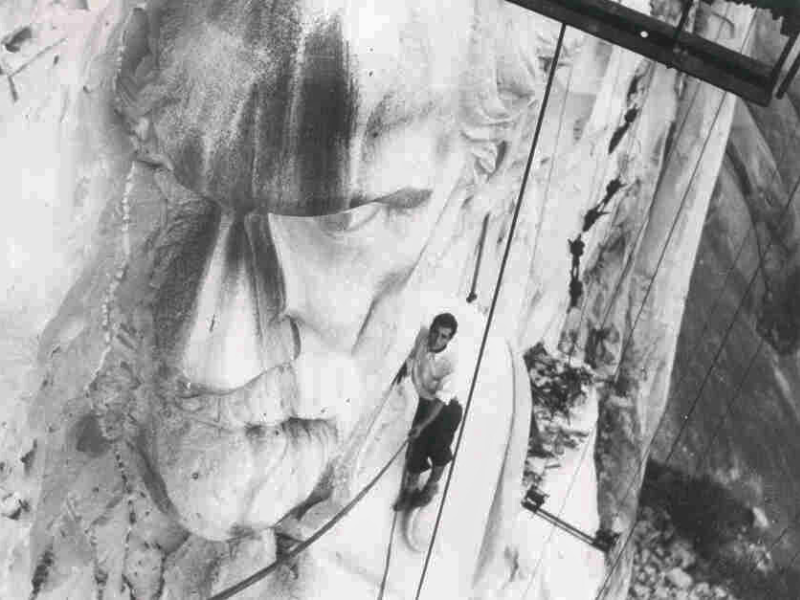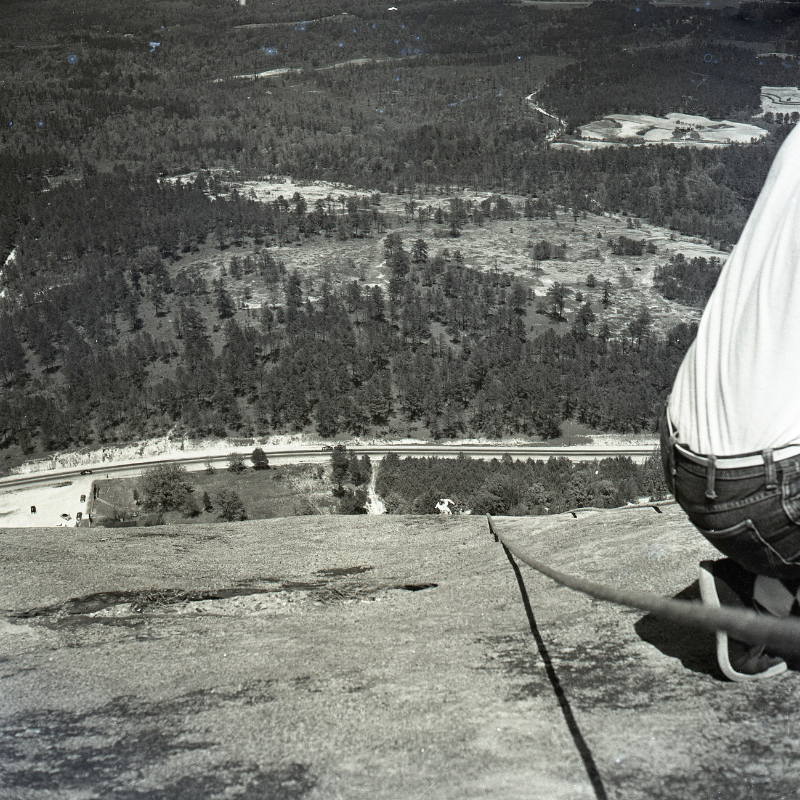Chilling Tales: Dangers of Stone Mountain
The hidden dangers of Stone Mountain.
By Marissa Howard, Programs and Membership Coordinator
How many times have you climbed Stone Mountain and enjoyed its beautiful and peaceful views? One frequently overlooked aspect of Stone Mountain is just how dangerous it can be. Over the years, as people have tried to climb, quarry, or traverse its rocky slopes, countless accidents, deaths, and injuries have occurred there.
For decades the mountain was quarried for granite. Hidden in the shadow of the mountain, near the lake, lies the former quarry site. A disastrous accident occurred in 1885, claiming the life of Edward Holmes and injuring two others. Dynamite failed to detonate at a blasting site, and the three men went to investigate. As they scrutinized the blasting detonator, the dynamite exploded and blew the ground out from under their feet, causing the fatal accident and injuries.

From the Argus Leader, March 5, 1929 via Newspapers.com
In 1929, an air compressor exploded in the office of the Stone Mountain Granite Corporation while the men were clocking out for the evening. This resulted in nine deaths; ten additional men were seriously injured. Several surviving quarrymen believed that some unaccounted-for workers were hurled from the explosion into the surrounding lake, which was next to the exploded office.

Elias Nour in front of carving mid-rescue; Coletti Nour Collection, DeKalb History Center Archives
For as long as hikers have been ascending the mountain, numerous individuals have perished because they got too close to the edge of this domed monadnock. From the summit, the edges of the mountain are visually deceptive; it can be hard to see how one could slip to their death. Harrowing tales, dating back to 1846 and continuing until just a few years ago, tell of people wandering or slipping off the side of the mountain. A protective fence was added in 1959.
The Confederate Monument was carved on a sheer cliff that is nearly 800 feet high. The precariousness of the carving site has also led to deaths, including that of 27-year-old Tom Kennedy in 1927. While working on the carving to dislodge stone, another piece fell, shaking the platform and leading to his death.
Another instance occurred in 1928 when L. C. Lankford, 18, of Atlanta, fell near the carving. According to witnesses, the youth ventured too close to the perilous edge on the north side of the mountain, made a misstep, and began slipping. Desperately, he tried to hold onto the rock, which worked for a fraction of a second, but moments later, he slipped away and fell 800 feet to his death.
Daredevils have always been drawn to Stone Mountain, from “hill-climbing” cars to walking on the edge. More harrowing tragedies on Stone Mountain would have occurred if not for the heroism and bravery of Elias Nour, known as the “Old Man of the Mountain.”








